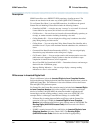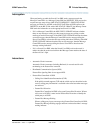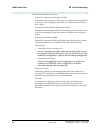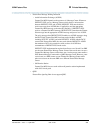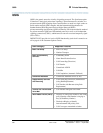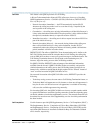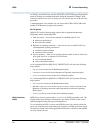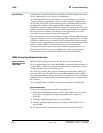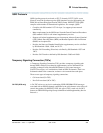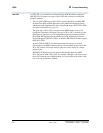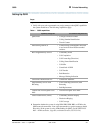
QSIG B Private Networking
Administration for Network Connectivity
CID: 77730 555-233-504 — Issue 1 — April 2000
364
An analog voice terminal user activates SS-CCBS or SS-CCNR by pressing the Recall
button or flashing the switchhook and then dialing the Automatic Callback (ACB)
Activation feature access code. An analog user can activate only one ACB call at any
given time.
A multiappearance voice terminal user can activate SS-CCBS or SS-CCNR for the
number of ACB buttons assigned to the terminal.
SS-CC Options
QSIG SS-CC has the following major options that are negotiated between the
Originating and the Terminating PBX:
1 Path reservation — there are two methods of establishing the CC call:
a path reservation method
b non-reservation method
2 Retention of signaling connection — there are two ways in which SS-CC uses
call independent signaling connections:
a connection retention method
b connection release method
3 Service retention — there are two possible behaviors when User B is found to be
busy again after User A responds to SS-CC Recall:
a service retention method
b service cancellation method
As an originating PBX for QSIG SS-CC, DEFINITY ECS will select the following
major options:
• non-reservation method for the Path Retention option
• connection release method for the Retention of Signaling connection option
• service cancellation method for the Service Retention option
As a Terminating PBX for QSIG SS-CC, DEFINITY ECS will select the following
major options:
• non-reservation method for the Path Retention option
• either the connection release method or the connection retention method for the
Retention of Signaling connection option depending on which the originating
PBX requests.
• service cancellation method for the Service Retention option
QSIG Centralized
AUDIX
QSIG allows users on a remote node to “cover” to an AUDIX on another node. The
original calling and called party information is provided to AUDIX so that each is
identified properly during message recording/retrieval.
To use centralized AUDIX, you must use QSIG Diversion. On a remote switch, the
call covers using Diversion to the hunt group assigned to AUDIX on the host switch.
Then the host switch sends all the appropriate information to AUDIX so that AUDIX
correctly answers the call.



